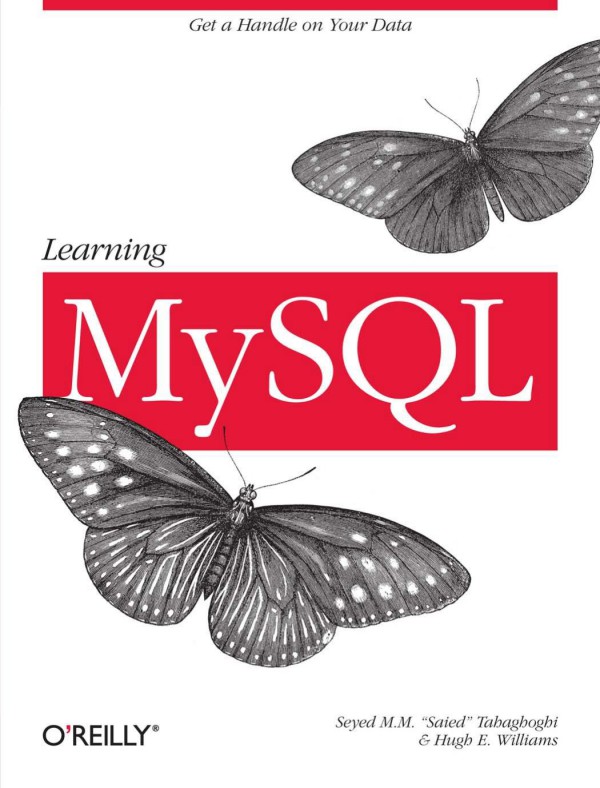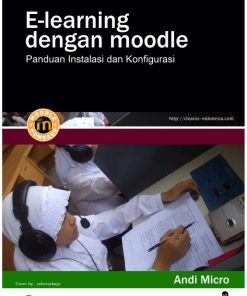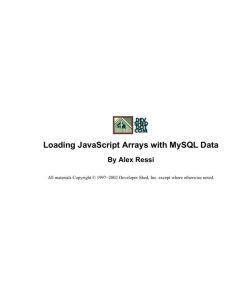Learning MySQL Get a Handle on Your Data 1st Edition by Saied MM Tahaghoghi, Hugh E Williams ISBN 0596529465 9780596529468
$50.00 Original price was: $50.00.$25.00Current price is: $25.00.
Authors:Saied M. M. Tahaghoghi; Hugh E. Williams , Series:IT & Computer [314] , Tags:Computers; Data Science; Data Warehousing; General; Database Administration & Management; Data Analytics; Languages; Sql; Xml , Author sort:Tahaghoghi, Saied M. M. & Williams, Hugh E. , Ids:Google; 9781449303969 , Languages:Languages:eng , Published:Published:Nov 2006 , Publisher:”O’Reilly Media, Inc.” , Comments:Comments:Whether you’re running a business, keeping track of members andmeetings for a club, or just trying to organize a large and diversecollection of information, you’ll find the MySQL database engineuseful for answering questions such as: Which are my top ten fastest-selling products?How frequently does this person come to our facility?What was the highest, lowest, and average score of the team last season?MySQL, the most popular open-source database, offers the power ofa relational database in a package that’s easy to set up andadminister, and Learning MySQL provides all the tools you need toget started. This densely packed tutorial includes detailedinstructions to help you set up and design an effective database,create powerful queries using SQL, configure MySQL for improvedsecurity, and squeeze information out of your data. After covering the basics, the book travels far into MySQL’ssubtleties, including complex queries and joins, how to interact withthe database over the Web using PHP or Perl, and importanthouse-keeping such as backups and security.Topic include: Installation on Linux, Windows, and Mac OS XBasic and advanced querying using SQLUser management and securityBackups and recoveryTuning for improved efficiencyDeveloping command-line and web database applications using thePHP and Perl programming languagesThe authors, Saied Tahaghoghi and Hugh E. Williams, have careers inacademia and business, and share a keen interest in research intosearch technologies.Whether you’ve never touched a database or have already completedsome MySQL projects, you’ll find insights in Learning MySQLthat will last a career.
Learning MySQL Get a Handle on Your Data 1st Edition by Saied MM Tahaghoghi, Hugh E Williams – Ebook PDF Instant Download/Delivery. 0596529465, 9780596529468
Full download Learning MySQL Get a Handle on Your Data 1st Edition after payment

Product details:
ISBN 10: 0596529465
ISBN 13: 9780596529468
Author: Saied MM Tahaghoghi, Hugh E Williams
Whether you’re running a business, keeping track of members andmeetings for a club, or just trying to organize a large and diversecollection of information, you’ll find the MySQL database engineuseful for answering questions such as: Which are my top ten fastest-selling products? How frequently does this person come to our facility? What was the highest, lowest, and average score of the team last season? MySQL, the most popular open-source database, offers the power ofa relational database in a package that’s easy to set up andadminister, and Learning MySQL provides all the tools you need toget started. This densely packed tutorial includes detailedinstructions to help you set up and design an effective database,create powerful queries using SQL, configure MySQL for improvedsecurity, and squeeze information out of your data. After covering the basics, the book travels far into MySQL’ssubtleties, including complex queries and joins, how to interact withthe database over the Web using PHP or Perl, and importanthouse-keeping such as backups and security. Topic include: Installation on Linux, Windows, and Mac OS X Basic and advanced querying using SQL User management and security Backups and recovery Tuning for improved efficiency Developing command-line and web database applications using thePHP and Perl programming languages The authors, Saied Tahaghoghi and Hugh E. Williams, have careers inacademia and business, and share a keen interest in research intosearch technologies. Whether you’ve never touched a database or have already completedsome MySQL projects, you’ll find insights in Learning MySQLthat will last a career.
Learning MySQL Get a Handle on Your Data 1st Table of contents:
Part I. Introduction
Chapter 1. Introduction
Why Is MySQL so Popular?
Elements of MySQL and Its Environment
The LAMP Platform
Structured Query Language
MySQL Software Covered in This Book
The Book’s Web Site
Chapter 2. Installing MySQL
Installation Choices and Platforms
Linux
Live CDs
Windows
Mac OS X
So, What Should I Do?
Using the Command-Line Interface
The Linux and Mac OS X Shell
Command completion and history
Performing restricted operations
Restricting access to files and directories
The Windows Command Prompt
Command completion and history
Using a Text Editor
Following the Instructions in This Book
Downloading and Verifying Files from the MySQL AB Web Site
Downloading MySQL from the MySQL AB Web Site
Verifying Package Integrity with MD5
Installing Under Linux
Installing MySQL on Linux Using RPM Packages from MySQL AB
Installing MySQL on Linux Using a gzipped Tar Archive from MySQL AB
Installing MySQL on Linux by Compiling the Source Code from MySQL AB
Installing MySQL, Apache, PHP, and Perl on Linux Using Distribution Packages
Installation on Red Hat and Fedora Core
Installation on Mandriva
Installing under Debian-based systems
Uninstalling MySQL
Installing MySQL, Apache, PHP, and Perl on Linux Using the XAMPP Integrated Package
Configuring a Newly Installed Server
Configuring a server installed using RPM or Debian packages
Configuring a system-wide server installed from tarball or source
Configuring a local server
Configuring MySQL for automatic start
Installing Under Windows
Installing Only MySQL Using Packages from MySQL AB
Windows installation using the installer
Starting and stopping MySQL as a service
Starting and stopping MySQL from the command line
Installation with the “no-install” .zip Archive
Installing MySQL, Apache, PHP, and Perl on Windows Using the XAMPP Integrated Package
Installing Under Mac OS X
Installing only MySQL Using the Installer from MySQL AB
Configuring the installed server
Installing Only MySQL Using the no-installer Package from MySQL AB
Installing MySQL, Apache, PHP, and Perl on Mac OS X Using the XAMPP Integrated Package
Using a MySQL Installation Provided by an ISP
Upgrading an Existing MySQL Server
Should I Upgrade to MySQL 5.1?
How to Upgrade
Steps to Upgrade an Existing MySQL Server
Configuring Access to the MySQL Server
What If Things Don’t Work?
Can’t Download Files from Behind a Proxy
Error Message About MySQL Executable Programs Not Being Found or Recognized
Error Message Running mysql_install_db
Server Doesn’t Start
Client Programs Can’t Connect to the Server
Server Doesn’t Stop
The Contents of the MySQL Directory
Configuring and Controlling the Apache Web Server
The Apache Document Root
The Apache Configuration File
The Apache Error Log
Starting and Stopping Apache
Checking Whether Your Apache Installation Supports PHP
Setting up Perl
Checking Your Existing Setup
Installing the Perl DBI and CGI Modules
Installing Perl modules under Linux
Installing Perl modules under Windows
Installing Perl modules under Mac OS X
Problems installing the Perl modules
Resources
Exercises
Chapter 3. Using the MySQL Monitor
Starting the Monitor
Style, Case, and Semicolons
The Monitor Help
Running the Monitor in Batch Mode
Loading the Sample Databases
MySQL Monitor Program Options
Graphical Clients
Exercises
Part II. Using MySQL
Chapter 4. Modeling and Designing Databases
How Not to Develop a Database
The Database Design Process
The Entity Relationship Model
Representing Entities
Representing Relationships
Partial and Total Participation
Entity or Attribute?
Entity or Relationship?
Intermediate Entities
Weak and Strong Entities
Entity Relationship Modeling Examples
The Music Database
What it doesn’t do
The University Database
What it doesn’t do
The Flight Database
What it doesn’t do
Using the Entity Relationship Model
Mapping Entities and Relationships to Database Tables
Map the entities to database tables
Map the relationships to database tables
Converting the Music Database ER Model to a Database Schema
Using Tools for Database Design
Resources
Exercises
Chapter 5. Basic SQL
Using the Music Database
The SELECT Statement and Basic Querying Techniques
Single Table SELECTs
Choosing Columns
Choosing Rows with the WHERE Clause
WHERE basics
Combining conditions with AND, OR, NOT, and XOR
ORDER BY Clauses
The LIMIT Clause
Joining Two Tables
The INSERT Statement
INSERT Basics
Alternative Syntaxes
The DELETE Statement
DELETE Basics
Using WHERE, ORDER BY, and LIMIT
Removing All Rows with TRUNCATE
The UPDATE Statement
Examples
Using WHERE, ORDER BY, and LIMIT
Exploring Databases and Tables with SHOW and mysqlshow
Exercises
Chapter 6. Working with Database Structures
Creating and Using Databases
Creating Tables
Basics
Collation and Character Sets
Other Features
Column Types
Common column types
Other integer types
Other rational number types
Other date and time types
Other string types
Keys and Indexes
The AUTO_INCREMENT Feature
The Sample Music Database
Altering Structures
Adding, Removing, and Changing Columns
Adding, Removing, and Changing Indexes
Renaming Tables and Altering Other Structures
Deleting Structures
Dropping Databases
Removing Tables
Exercises
Chapter 7. Advanced Querying
Aliases
Column Aliases
Table Aliases
Aggregating Data
The DISTINCT Clause
The GROUP BY Clause
Other aggregate functions
The HAVING Clause
Advanced Joins
The Inner Join
The Union
The Left and Right Joins
The Natural Join
Nested Queries
Nested Query Basics
The ANY, SOME, ALL, IN, and NOT IN Clauses
Using ANY and IN
Using ALL
Writing row subqueries
The EXISTS and NOT EXISTS Clauses
EXISTS and NOT EXISTS basics
Correlated subqueries
Nested Queries in the FROM Clause
User Variables
Transactions and Locking
Table Types
MyISAM
Memory or Heap
InnoDB
Transaction examples
BDB
Exercises
Chapter 8. Doing More with MySQL
Inserting Data Using Queries
Loading Data from Comma-Delimited Files
Writing Data into Comma-Delimited Files
Creating Tables with Queries
Updates and Deletes with Multiple Tables
Deletion
Updates
Replacing Data
The EXPLAIN Statement
Exercises
Chapter 9. Managing Users and Privileges
Understanding Users and Privileges
Creating and Using New Users
Privileges
The GRANT OPTION Privilege
How Privileges Interact
Users and Hosts
Local and Remote Users
Creating a New Remote User
Anonymous Users
Which User Is Connected?
Checking Privileges
mysqlaccess
Configuring mysqlaccess
Revoking Privileges
Removing Users
Understanding and Changing Passwords
The Default Users
Default User Configuration
Linux and Mac OS X
Windows
Securing the Default Users
Devising a User Security Policy
Choosing Users and Privileges
More Security Tips
Resource-Limit Controls
The mysql_setpermission Program
Managing Privileges with SQL
The user Table
The db Table
The tables_priv Table
The columns_priv Table
The host Table
Activating Privileges
Privileges and Performance
Resetting Forgotten MySQL Passwords
Exercises
Part III. Advanced Topics
Chapter 10. Backups and Recovery
Dumping a Database as SQL Statements
mysqldump Options
Loading Data from an SQL Dump File
mysqlhotcopy
Scheduling Backups
Linux and Mac OS X
Windows XP
General Backup Tips
The Binary Log
Checking and Repairing Corrupted Tables
mysqlcheck
myisamchk
Re-Creating Damaged Grant Tables
Resources
Exercises
Chapter 11. Using an Options File
Configuring Options for the MySQL Monitor
Structure of the Options File
Scope of Options
Search Order for Options Files
Determining the Options in Effect
Exercises
Chapter 12. Configuring and Tuning the Server
The MySQL Server Daemon
MySQL Server Options
Examples
Server Variables
The Slow Query Log
Query Caching
The Old Variables Format
Checking Server Settings
Other Things to Consider
Resources
Exercises
Part IV. Web Database Applications with PHP
Chapter 13. Web Database Applications
Building a Web Database Application
How Web Software Works
Three-Tier Architectures
The Apache Web Server
Web Server Index Files
Introducing PHP
Example: Displaying the Artists from the Music Collection
Using a PHP-Enabled Web Hosting Site
Resources
Exercises
Chapter 14. PHP
Language Basics
Strings
Arrays
Manipulating Variables
Displaying Information
Conditional Statements
Loops
Functions
Passing variables by reference
Handling Errors in PHP
Accessing MySQL Using PHP
The Original PHP MySQL Library
The PHP Improved MySQL Library
What’s New in MySQLi
Accessing Query Results with mysql_fetch_array() and mysqli_fetch_array()
Finding the Number of Changed Rows Using mysql_affected_rows and mysqli_affected_rows
Handling MySQL Errors
Handling errors using the MySQLi library
Handling errors using the older MySQL library
Handling errors in production code
Writing files and sending emails using PHP
Modularizing Code
Protecting Script and Header Files
Processing and Using User Data
The PHP Predefined Superglobal Variables
Untainting User Data
Limiting the Size and Type of Input Data
Abusing Calls to Shell Commands
Preventing SQL Injection Attacks
Using Data from the Client
Sessions
The Reload Problem
Using PHP for Command-Line Scripts
Using Command-Line Arguments
Resources
Exercises
Chapter 15. A PHP Application: The Wedding Gift Registry
Designing and Creating the Wedding Database
The Login Form
Using One Script for the Form and for Processing
Passing a Message to a Script
Logging Users In and Out
Verifying New Users
Authenticating the User
Starting the User Session
Logging the User Out
The db.php Include File
Editing the List of Gifts
Restricting Edit Access
Role-Based Authentication
The Gift Editing Form
Deleting a Gift
Processing the Submitted Form
Loading Sample Gifts
Listing Gifts for Selection
Selecting and Deselecting Gifts
Adding a Gift
Removing a Gift
Resources
Exercises
Part V. Interacting with MySQL Using Perl
Chapter 16. Perl
Writing Your First Perl Program
Scripting With Perl
Mathematical Operators
Operator precedence
More on Variables
Single and double quotes
Arrays and Hashes
Control Structures: Loops and Conditionals
Iterating Through Arrays and Hashes
Conditional Statements
Reading Input from the Command Line and from Files
Reading in values from the command line
Reading in values from a file
Reading in values from standard input
Writing values to a file or standard output
Writing Your Own Perl Functions
Resources
Exercises
Chapter 17. Using Perl with MySQL
Connecting to the MySQL Server and Database
Handling Errors When Interacting with the Database
Using Queries That Return Answer Sets
Using Queries That Don’t Return Answer Sets
Binding Queries and Variables
Binding Variables to a Query
Binding Query Results to Variables
The Complete Script Using Both Types of Binding
Importing and Exporting Data
Handling NULL Values
Resources
Exercises
Chapter 18. Serving Perl Pages to the Web
The Perl CGI Module
Processing User Input
Using One Script for the Form and for Processing
A Note on mod_perl
Perl Security
Resources
Exercises
Part VI. Appendix
Appendix. The Wedding Registry Code
People also search for Learning MySQL Get a Handle on Your Data 1st:
learning mysql: get a handle on your data
learning mysql get a handle on your data pdf
learning mysql get a handle on your data 2nd edition
learning mysql and mariadb
learning mysql get a handle on your data
You may also like…
eBook CHM
Learning PHP and MySQL 1st edition by Davis, Michele, Phillips, Jon 9780596101107, 0596101104












